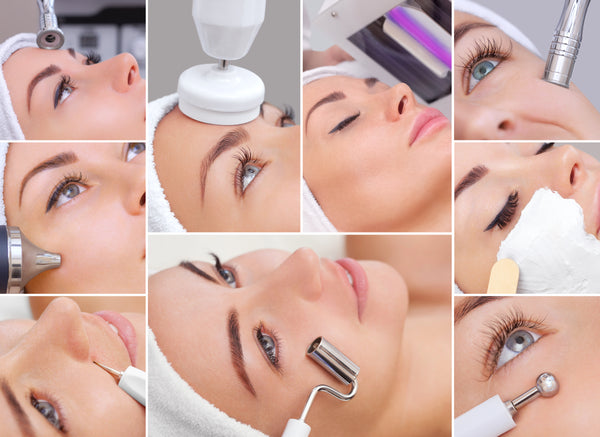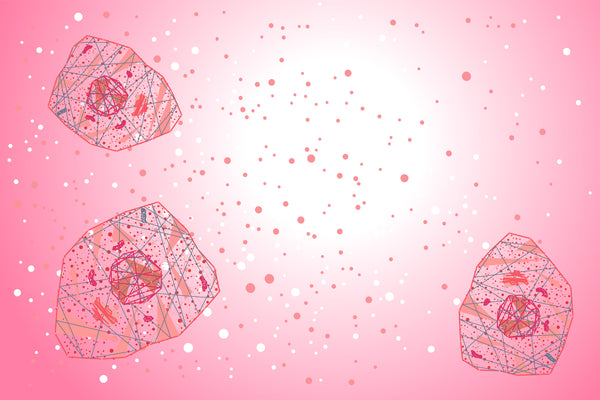Rosacea is a vascular disorder of the skin characterized by flushing, erythema, and telangiectasia. The visual side effects are typically prominent on the central face, including the nose, cheeks, eyelids, and forehead. Other clinical considerations in rosacea include papules and/or nodules that can lead to scarring. The one thing that all forms of rosacea have in common is chronic poor vascular hemostasis (blood coagulation). This leads to leaky vessels, pooling of blood, delayed removal of inflammatory mediators, and persistent perivascular inflammation. Prolonged inflammation leads to the formation of fibrous tissue and thickening of the skin which are characteristics of phymatous rosacea. Rhinophyma is the most common, it presents a thickened bulbous texture of the nose. Rosacea can even cause irritation around the eyes in the case of ocular rosacea.
The exact cause of rosacea is unknown, but several theories have been suggested on what may trigger the vessel dilation, resulting in flushing and redness. One of the predominant, controversial theories describes a perifollicular inflammatory process that is aggravated by microbial organisms. The bacteria Cutibacterium acnes and demodex mites have been linked to rosacea and there is evidence that antibiotics targeting these organisms have proven helpful in treating symptoms. These organisms are also found in high concentration in those without rosacea, making it hard to know whether they are the cause or the effect of rosacea. 1 A neurogenic origin to the inflammatory, as well as vascular, component of rosacea can be well supported. Therefore, as revealed by Schwab et al., drugs that affect neurovascular and neuroimmune communication may be advantageous in the treatment of rosacea.2 There are many speculations surrounding the origin of rosacea that are supported by science, but none are proven to be the cause. Currently there is no cure for rosacea, making the goal for treatment to control and alleviate symptoms.
Emphasis should be placed on avoiding triggers and using the right products. Using proper skin care should be a priority of the rosacea client. The use of a physical sunscreen is the first line of defense against further damage. It is postulated that sun exposure may not only be a contributing factor but may also be a cause of rosacea. Chemical sunscreens should be avoided as they can be irritating to the sensitive skin. On the same note, care must be used with makeup; mineral-based makeup is recommended due to its anti-inflammatory and sun-protective qualities.
Humectants and occlusive agents used to keep the skin moisturized are essential for those with rosacea. There is evidence that shows decreased barrier function resulting in transepidermal water loss (TEWL), which is the loss of moisture through the outer layers of skin. Hyaluronic acid, panthenol, glycerine, pentavitin ®, and revidrate™ are some of the many humectants used in skin care products. While the skin absorbs this additional moisture, it should also be occluded to avoid losing moisture through the impaired barrier. Common occlusive agents that are beneficial for rosacea are lanolin, shea butter, squalane, and ceramides.
Calming inflammation and the appearance of redness can be achieved through topical ingredients. Beta carotene, a precursor of vitamin A, is a powerful antioxidant with anti-inflammatory properties. Growth factors are known for their wound healing capabilities making them beneficial for sensitized skin types, including rosacea. Vitamin A is a critical ingredient needed by the skin to perform at its optimal health. Some providers are weary to recommend vitamin A since it can be sensitizing but using the right form in a step- up system allows for the skin to acclimate gradually. Antioxidants provide added protection from free radicals created by external factors, thereby shielding the skin from further inflammation. Vitamins C and E are potent antioxidants that work synergistically to fight off aggressors. Lactic acid can be used to increase cell turnover and has hydrating and brightening properties. The combination of these beneficial ingredients can help improve skin quality for those with rosacea.
Although there is no cure for rosacea, products and treatments to control symptoms have come a long way and there are more constantly being discovered. The hardest part for those afflicted with rosacea seems to be avoiding triggers—which include everyday instances such as temperature changes, eating spicy foods, drinking hot liquids, and exposure to sunlight. Rosacea can be frustrating for the client and aesthetic provider alike since any improvement can be reversed when an outbreak occurs. It is important for the client to know that treatment is a joint effort between you and them, and if symptoms recur, there are a multitude of options available to help.
References
- GH Crawford et al, Rosacea: I. Etiology, pathogenesis, and subtype classification, J Am Academy Dermatol, 51(3) 327-341 (2004).
- VD Schwab et al, Neurovascular and neuroimmune aspects in the pathophysiology of rosacea, J Invest Derm Symp P, 15(1) 53-62 (2011)



0 comments